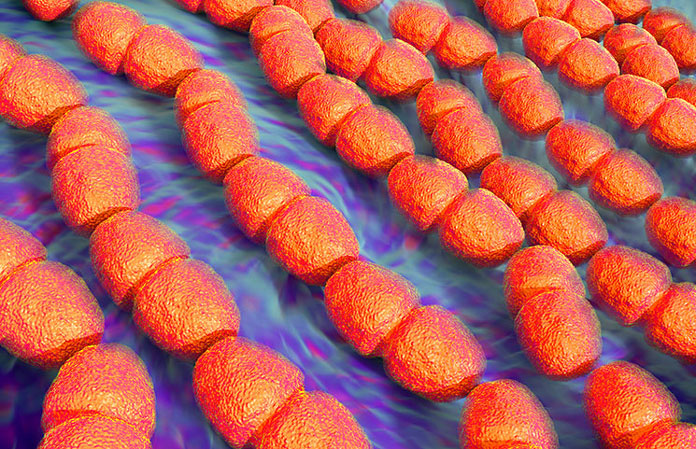Food sensitivities refer to having issues with certain foods. The multiple factors involved in food sensitivities make it complex and often confusing. Diagnosing sensitivity to food can be challenging because its signs and symptoms can occur days after the food was consumed. Food sensitivities typically result from toxic responses to food, and they can be either allergic reactions or food intolerances.
Statistics indicate that 45-50 percent of people around the world complain of unidentified health issues. It is possible that sensitivity to food might be the primary cause in some cases. According to the available evidence, food sensitivities are a common menace across the world, and they have a varied impact on your health.
Individuals suffering from food sensitivities may present with symptoms such as bloating, diarrhea, vomiting, blood in the stool, and eczema among others. Clinical studies are accumulating evidence that demonstrates how food sensitivity can worsen the symptoms of other conditions such as asthma and rheumatoid arthritis.
The majority of the American population is obese. Obesity on its own is a risk factor for many health conditions such as heart attacks, diabetes mellitus, cancer, and hypertension just to mention a few.
Food Allergies
Food allergies involve the immune system. They are defined as toxic clinical reactions that occur against food or food additives. The immune system protects the body against the invasion of foreign molecules.
The immune system is more active in the parts of the body that are in direct contact with the environment such as the nose, lungs, and skin. Most of the potentially harmful foreign molecules gain access into the body through the gastrointestinal tract, and this explains why more than 60 percent of the immune activities take place in the digestive tract.
The immune system comprises of the B-cells and the T-cells. The B-cells are involved in the production of antibodies while the T cells conduct surveillance for harmful foreign molecules. The T-cells attack and kill harmful cells such as infectious bacteria organisms. The macrophages are the scavenger cells that move around the body getting rid of potentially harmful molecules.
The immune cells can be a threat to the normal health of the body. The intestinal tract receives new molecules on a daily basis in terms of food.
An allergic reaction can occur when the immune system identifies the food molecule in the digestive tract as a foreign substance. The molecules identified by the immune cells as potentially harmful and toxic are referred to as antigens.
Once the immune cells bind to the antigen, chemicals such as histamine are released which attract the macrophages to the site. An excessive production of histamine could lead to anaphylactic reactions which present with difficulty in breathing. Anaphylactic reactions are responsible for more than 29,000 annual admissions to emergency rooms in the United States.
The binding of the surveillance cells to the antigen also stimulate the release of antibodies by the B-cells. The antibody can only bind to one specific antigen. The macrophages are responsible for the removal of the dangerous molecule.
Foods that may cause food allergies include soy foods, dairy products, wheat, barley, and rye among others. According to studies, more than 140 different foods can result in food allergies.
According to the United States Centers for Disease Control, cow’s milk should be the first food to consider for removal during an elimination diet plan. Scientists claim that cow’s milk has over 25 chemical components that are likely to trigger an allergic reaction in an individual. One of the allergens in a cow’s milk is a protein known as casein.
The protein is used in several products. It is also included in soy-based foods where it is included to boost the protein content. Other factors that will determine whether the food will cause an allergic reaction or not include how the food was prepared, processed, and handled. Heating can destroy some of the allergens.

Food Intolerance
Unlike food allergies, food intolerance does not involve the immune system. Most cases of toxic responses to food are due to food intolerance and not food allergies. Food intolerance is defined as a toxic response to food that does not involve the body’s defense system. The problem occurs due to various reasons.
Foods that contain molecules that are difficult to digest or absorb in the digestive tract can cause food intolerance. An example is lactose intolerance. Food intolerance can also occur as a result of food additives, such as sulfite, that are added as preservatives. There are several types of food intolerances.
The most common include intolerance to gluten, lactose, tyramine, and preservatives. In this article, we are going to discuss about the elimination diet plan. Later we will look at six major foods that should be considered for removal in an elimination diet plan.
What Happens During Food Sensitivity?
You are likely to encounter several symptoms due to your sensitivity to food. The symptoms may arise from the various systems in your body to include the gastrointestinal tract, the nervous system, and the respiratory system.
If the symptoms are a result of the food you have consumed, then the next assignment involves identifying the food and eliminating it from your diet plan. Elimination diets involve getting rid of a component of your diet plan that might be affecting your health.
There are various reasons as to why most people start elimination diets. Others do it only because they feel unhealthy. Some people adopt elimination diets as a way of cutting weight, solving sleep problems, getting rid of cravings among others.
However, according to experts, an elimination diet should be able to restore a relationship between an individual and the type of food they consume. The elimination diet should also enable an individual to identify the type of foods that are not ideal for their health.
For example, people who have struggled with emotional eating should be able to find a solution from an elimination diet. There is no need for you to suffer from food sensitivities for a long time when the solution to the problem is so simple. According to Dr. Mark Hyman, eliminating the food that makes you feel sick could make all the difference.

How To Conduct An Elimination Diet
The larger the number of foods removed by an elimination diet, the better the results. A highly restrictive elimination diet is effective in reducing cases of food sensitivity. A good elimination diet plan should focus on getting rid of gluten, corn, beef, nuts, citrus, coffee, chicken and pork among others. Ideally, the plan could last from weeks to months.
Several foods are available that can be used as a replacement of the removed foods. It is advisable to purchase organic, grass-fed, and wild foods.
Bright fruits and vegetables are also helpful. You should also consider buying seasonal foods from farmers. It is important to note down details such as weight, height, and measurements of your body before embarking on an elimination diet plan.
The body measurements should be taken again after the elimination diet plan is complete. A good elimination diet plan should start with the quality of sleep one gets. The number of times an individual’s sleep gets disrupted at night should be used as a guide.
Another important aspect involves examining the gut health. One should note any stomach problems such as bowel movements, abdominal pain, nausea, and vomiting that arise after consuming a particular type of food. Stomach cramping and bloating should also raise the alarm.
The joints and tissues should also be examined. Symptoms such as aching joints and the production of a popping sound by the joints could indicate the presence of food sensitivity. Skin conditions such as the presence of acne, rosacea, and puffiness also indicate an issue.
The next thing to consider is your state of mind. Symptoms such as lethargy, dizziness, confusion, and brain fog should be noted.
Foods To Consider In An Elimination Diet Plan
1. Gluten
Some people present with gut symptoms after the consumption of foods with gluten as a component of the ingredients. Such foods may include wheat, barley, and rye. Symptoms from gluten sensitivity arise even in individuals who do not have celiac problems; as a result, gluten sensitivity is also known as non-celiac gluten sensitivity.
Gluten sensitivity is a medical issue that is on the rise across the world. It is a new concept that requires more research on how it occurs and who is at risk.
The exact role played by the immune system in the development of the non-celiac gluten sensitivity is poorly explained. Further studies are needed to find out the diagnostic approach that can be used to diagnose gluten sensitivity at its early stage. Studies have found out that 30 percent of persons who present with gluten sensitivity do not have any celiac problem. Sensitivity to gluten consumption can be the result of an excessive intake of anti-inflammatory agents, as well as antibiotics.
The drugs alter the healthy balance that is required by the digestive tract leading to inflammatory responses. Gluten intolerance presents with several symptoms including skin disorder keratosis pilaris, depression, premenstrual syndrome, and bloating among others. Individuals who are gluten intolerant should avoid its consumption completely since even a trace of it can trigger the symptoms.
2. Dairy
Lactose intolerance is one of the most typical cases of food intolerance. More than ten percent of the adult population has been diagnosed with lactose intolerance. It presents with symptoms such as flatulence, bloating, and diarrhea following consumption of cow's milk. Lactose intolerance occurs due to a type of sugar that is known as lactose which is present in the cow's milk. The sugar requires an enzyme called lactase for its digestion to take place.
Individuals diagnosed with lactose intolerance usually lack the lactase enzyme, or they produce it in minimal amounts. As a result, their body can digest only a small percentage of the lactose sugar that is present in cow’s milk. As a result, a large percentage of the sugar remains in the digestive tract in undigested form.
The undigested lactose is taken to the colon where it gets broken down and fermented by the gut bacteria. The fermentation process results in symptoms that are associated with lactose intolerance such as bloating, gas production, and abdominal pain.
Lactose intolerance is not considered an allergic reaction to food because it does not involve the immune system. Besides the sugar, the protein known as casein that is present in milk can also cause food intolerance.
Casein resembles gluten, and the majority of people who are intolerant to gluten are also casein intolerant. Individuals who have problems with cow's milk can present with skin conditions such as rosacea and cystic acne whenever they drink milk.
Dairy can also interfere with the normal body pH. The interference of the body's pH is a result of the acidic conditions that are caused by lactose. There is also a risk of consuming antibiotics from the milk of conventionally-raised cows.
Individuals having lactose intolerance are advised to try organic goat or sheep products. However, those having casein intolerance will still have problems with goat and sheep products. The best way of dealing with this involves eliminating all forms of dairy and its products for a thirty day period.
Later, one can start adding back products such as kefir, yogurt, or farmer's cheese. If you tolerate those, they can go ahead and add more forms. The products will provide your body with healthy lower digestive tract flora that helps get rid of lactose.
Yogurt is easily digestible, and does not produce symptoms associated with lactose intolerance. Foods that are safe to consume during the thirty day period include almonds, collard greens, figs, kale, and spinach.
3. Eggs
Eggs are known to cause food allergies because they involve the immune system of the body. Individuals with an autoimmune disorder are likely to suffer from an allergic reaction upon the consumption of eggs.
Others that are at risk of developing an allergic reaction after eating eggs include those with a leaky gut. Statistics reveal that approximately three percent of people have an egg allergy. Experts also estimate that around two percent of children are allergic to eggs. The good news is that children typically outgrow the problem in their teen years.
Allergic reactions are caused by an enzyme called lysozyme that is present in eggs. Lysozyme breaks proteins into shorter chain molecules known as amino acids for easy absorption. Egg allergy occurs when the immune system of the body becomes sensitized against proteins that are contained in an egg.
When a person consumes eggs, the body’s defense system takes the proteins present in the eggs as a potentially harmful foreign matter. The immune cells then bind to these proteins resulting in an array of symptoms.
Egg allergy symptoms may include skin reactions such as hives and rash. Patients may also present with respiratory difficulties such as shortness of breath and stomach pain. Anaphylaxis reactions are also common.
One of the ways of diagnosing the presence of egg allergy in an individual involves the use of an elimination diet plan. If the symptoms cease upon the removal of eggs from the diet, then reappear upon when eggs are consumed again, then the person is likely to have an allergy to eggs.
The fact that eggs are the primary source of proteins makes it difficult to get rid of them from the diet. However, there are other several foods that are rich in proteins. Such foods include avocado, almonds, black beans, and nut butter among others.
4. Sugar
Sugar intolerance is the major cause of gastric distress in most individuals. Many types of sugars can cause problems upon their consumption. Sugar intolerance is a hereditary condition that is caused by the deficiency of the liver enzymes that are responsible for breaking down fructose.
Symptoms of fructose intolerance include vomiting, hypoglycemia, and abdominal pain. Individuals who continue taking in fructose despite being intolerant to it can develop liver and kidney failure which may lead to death. Fructose intolerance can be diagnosed using enzyme tests and liver function tests.
Another common form of sugar intolerance is the disaccharide intolerance. The condition is rare, and it is characterized by the deficiency of sucrose and isomaltase enzymes. The two enzymes are vital for the breakdown of sucrose and dextrin which is a product of starch digestion.
Symptoms are commonly seen in infants who are fed milk formulas that are rich in sucrose or polycose. Symptoms include watery diarrhea, abdominal discomfort, and swelling of the abdominal cavity. Other forms of sugar intolerance include glucose-galactose intolerance which resembles disaccharide intolerance and trehalose intolerance which occurs due to a deficiency in the trehalase enzyme.
It is important to identify the type of sugar intolerance that an individual has before eliminating foods from the diet. Natural forms of sugars such as honey, fruits, and maple syrup can be helpful.
5. Caffeine
An excessive consumption of caffeine can worsen feelings of depression and anxiety in individuals. People who have anxiety issues and those with sleep difficulties are advised to avoid the consumption of caffeine. Experts suggest that individuals with an intolerance to caffeine should consider cutting their daily consumption of caffeine by half.
For instance, if you drink four cups of coffee per day, you should reduce it two cups. The following day, cut it back to one cup. The next day, try ½ cup. Finally, it will get to zero whereby you should now cease the intake of caffeine.
Caffeine withdrawal may present with a mild headache which is perfectly normal. Caffeine's activity in the brain makes it addictive.
Regular use of caffeine can cause headaches upon its withdrawal. A headache can be managed by increasing the intake of water. Lemon juice or cucumber can be added to the water to give it some flavor.
The water makes you feel full and less dependent on caffeine. You should also consider getting rid of all processed foods that contain caffeine as an ingredient. Green smoothies can be helpful to jumpstart the mornings.
Withdrawal from caffeine should last between one to three days depending on your typical consumption level.
6. Nightshades
Nightshades are not common among foods that cause intolerance and allergies. However, individuals who are intolerant to nightshades will present with several symptoms such as abdominal pain, joint pains, and even digestive problems.
Nightshades contain alkaloids which are responsible for most of the symptoms that present upon their consumption. Most people are not aware of the risks that are associated with nightshades because they are just fruits and vegetables.
It is advisable to seek immediate medical assistance whenever an individual develops allergic reactions upon consuming them. Those diagnosed with an intolerance to nightshades should consider removing them completely from their diet. The removal period should be at least two weeks.
Some foods that belong to the nightshade family include cayenne pepper, eggplants, peppercorn, and paprika. Others include pimentos, some types of potatoes, and tomatillos.

Foods To Include During An Elimination Diet Plan
During an elimination diet, it is advisable to make 40 percent of the food consumed fresh vegetables. Foods high in proteins should form 30 percent, and 20 percent should be foods that are rich in healthy fats. The remaining 10 percent should comprise of foods rich in carbohydrates and fruits.
The vegetables should be ideally organic together with a few fresh fruits. The most recommended vegetables include cruciferous vegetables and the leafy green vegetables. The cruciferous vegetables include cauliflower, broccoli, and brussel sprouts.
Foods that are high in proteins and healthy fats should form 50 percent of the diet. Protein sources such as organic grass-fed meat and poultry should be given priority. Others include wild-caught fish, cage-free eggs, and a small percentage of sprout beans. Sources of healthy fats include coconut oil, olive oil, avocados, and nuts.
Who Should Consider Using An Elimination Diet plan?
Healthcare professionals recommend that every individual should consider doing an elimination diet at least once in their lifetime. It is thought that most people do not realize that they have symptoms of food intolerance until they experience how it feels living without these symptoms. For instance, an individual might think that they are going through a frequent headache or runny nose because the condition runs in the family.
However, after performing an elimination diet, they notice that the problem is a result of a particular food that they consume. The symptoms resolve upon the removal of the particular food from the diet. An elimination diet can particularly benefit the following types of people:
- Individuals who have been diagnosed with an autoimmune disorder or a metabolic syndrome.
- Individuals who are suffering from skin blemishes, rashes, or irritations.
- People who have low energy levels despite eating healthy foods.
- People who commonly present with pains and body aches as a result of inflammation.
Benefits Of An Elimination Diet
-It reveals food allergies
Patients who are intolerant to specific foods are not aware of the symptoms that present after eating these foods. Conducting an elimination diet plan will be able to reveal the foods that are likely to cause the symptoms as a result of food intolerance.
It helps in relieving skin irritations
According to research, most skin conditions such as eczema and acne occur as a result of food allergies. The most common types of allergens that cause skin conditions include milk, eggs, tomatoes, and cereal grains.
It relieves symptoms associated with IBS
A study was conducted by researchers at the University of Kansas Medical Center to find out the effect of an elimination diet on patients with an irritable bowel syndrome. The study found that patients showed a significant improvement after removal of certain foods from their diet.
It is useful to individuals with leaky gut syndrome
A leaky gut is one of the major causes of allergic reactions as well as autoimmune disorders. Leaky gut syndrome develops when the lining of the gastrointestinal tract acquires tiny holes which allow small substances to pass from the digestive tract into the blood stream. The result is severe damage to the body system.
It helps with management of migraines and headaches
Patients who suffer from frequent headaches and migraines can benefit from an elimination diet plan. It is an effective and inexpensive therapeutic strategy for managing stubborn headaches. A study recorded a decrease in the frequency of migraines after patients were put through an elimination diet plan.
It can be used to prevent learning disorders
The risk associated with learning disorders upon the consumption of certain foods such as pasteurized dairy products and gluten can be prevented. The proteins contained in these foods may cause intestinal permeability. A restrictive elimination diet can help lower symptoms of the learning disorders.

Food Sensitivities Final Thoughts
It is advisable to use the World’s Healthiest Foods’ recipe during an elimination diet plan to ensure that you get essential nutrients which are necessary to promote good health. The nutrient-rich foods provide long-term health benefits such as reducing the risk of health issues.









